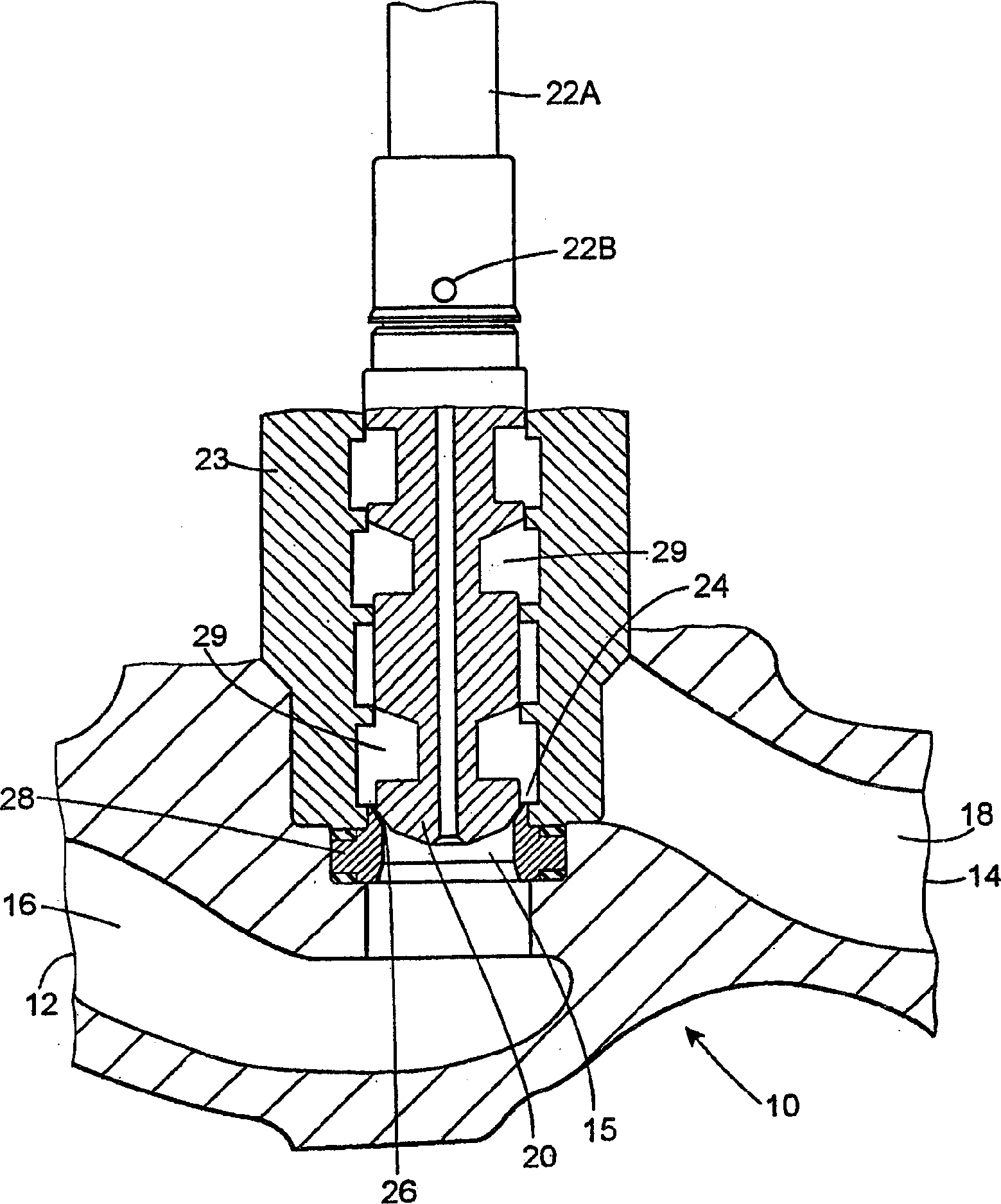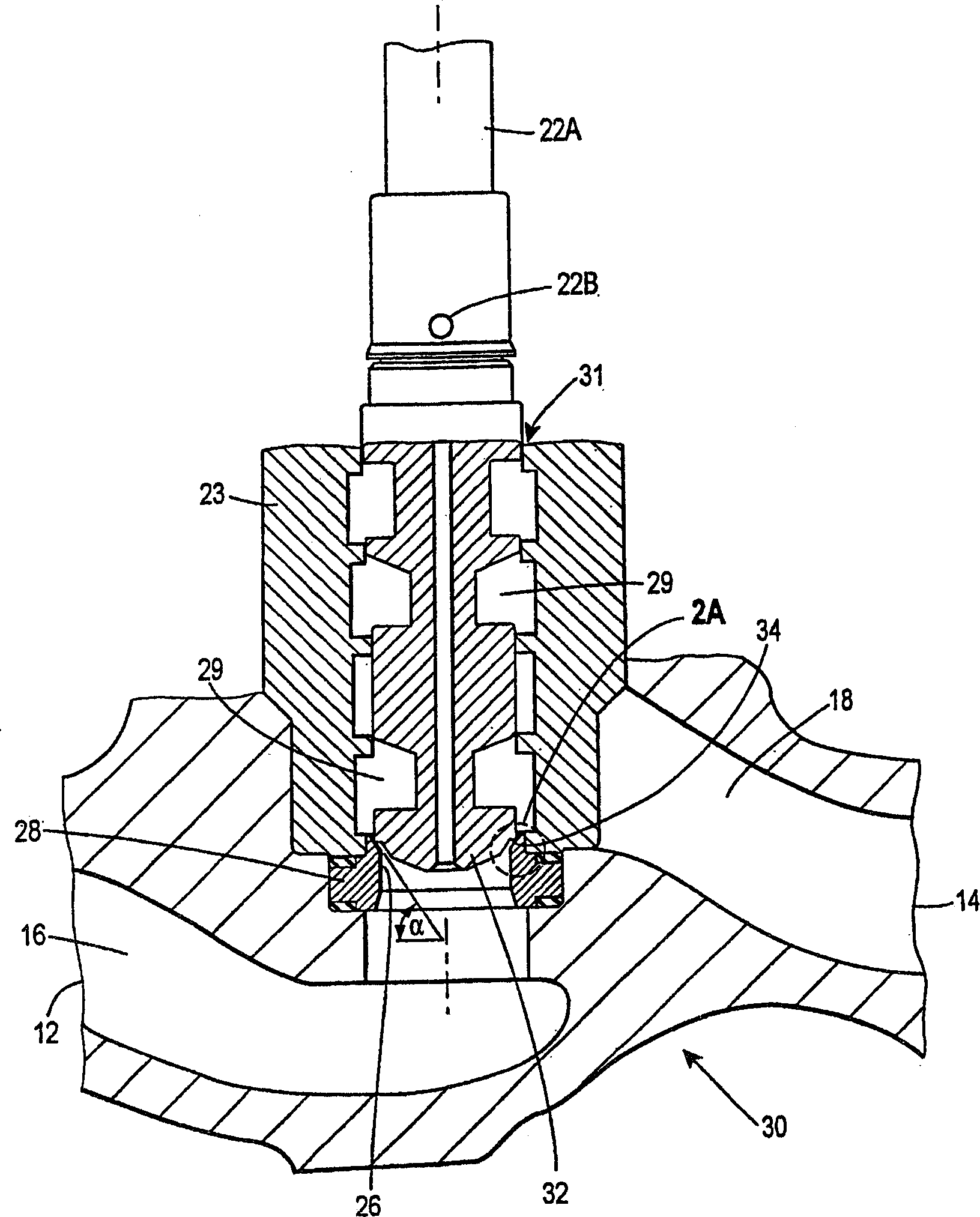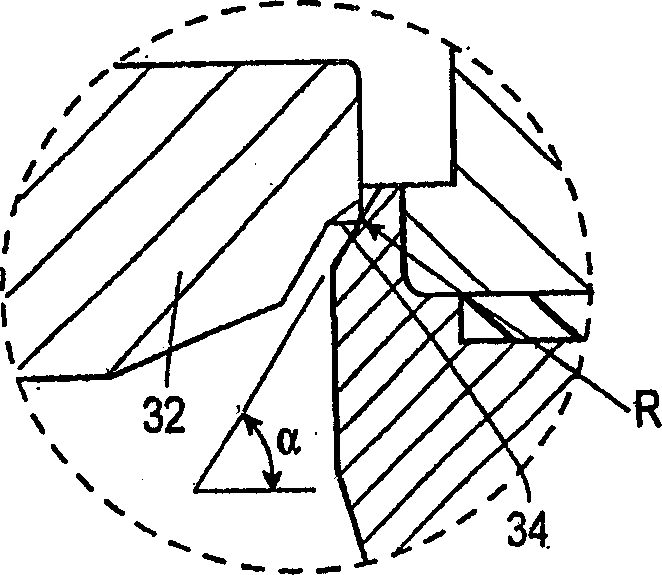Control valve trim
A technology for valve adjustment and fluid control, applied to valve details, valve devices, engine components, etc., to achieve the effects of increased service life, small leakage, and small brake thrust requirements
- Summary
- Abstract
- Description
- Claims
- Application Information
AI Technical Summary
Problems solved by technology
Method used
Image
Examples
Embodiment Construction
[0018] Figure 1 shows a conventional valve 10 with an anti-cavitation trim. Valve 10 includes a fluid inlet 12 , a fluid outlet 14 , and a fluid inlet passage 16 connecting fluid inlet 12 to a fluid outlet passage 18 through a bore 15 . Valve 10 is of the flow-up type in which fluid inlet 12 and fluid inlet passage 16 are located at a lower level than fluid outlet 14 and fluid outlet passage 18 . The valve plug 20 is connected by a valve stem 22A to an actuator, which is not shown but would be located on the valve stem 22A. One or more holes 22B are provided near the top of the valve plug 20 to receive, for example, grooved pins (not shown) to secure the connection of the valve plug 20 to the valve stem 22A. A cage 23 is located in the fluid flow path to affect desired fluid flow characteristics. An outer surface 24 of the valve plug 20 contacts a surface 26 of a seat ring 28 which forms a valve seat for the valve plug 20 .
[0019] In an effort to prevent cavitation within...
PUM
 Login to View More
Login to View More Abstract
Description
Claims
Application Information
 Login to View More
Login to View More - R&D
- Intellectual Property
- Life Sciences
- Materials
- Tech Scout
- Unparalleled Data Quality
- Higher Quality Content
- 60% Fewer Hallucinations
Browse by: Latest US Patents, China's latest patents, Technical Efficacy Thesaurus, Application Domain, Technology Topic, Popular Technical Reports.
© 2025 PatSnap. All rights reserved.Legal|Privacy policy|Modern Slavery Act Transparency Statement|Sitemap|About US| Contact US: help@patsnap.com



